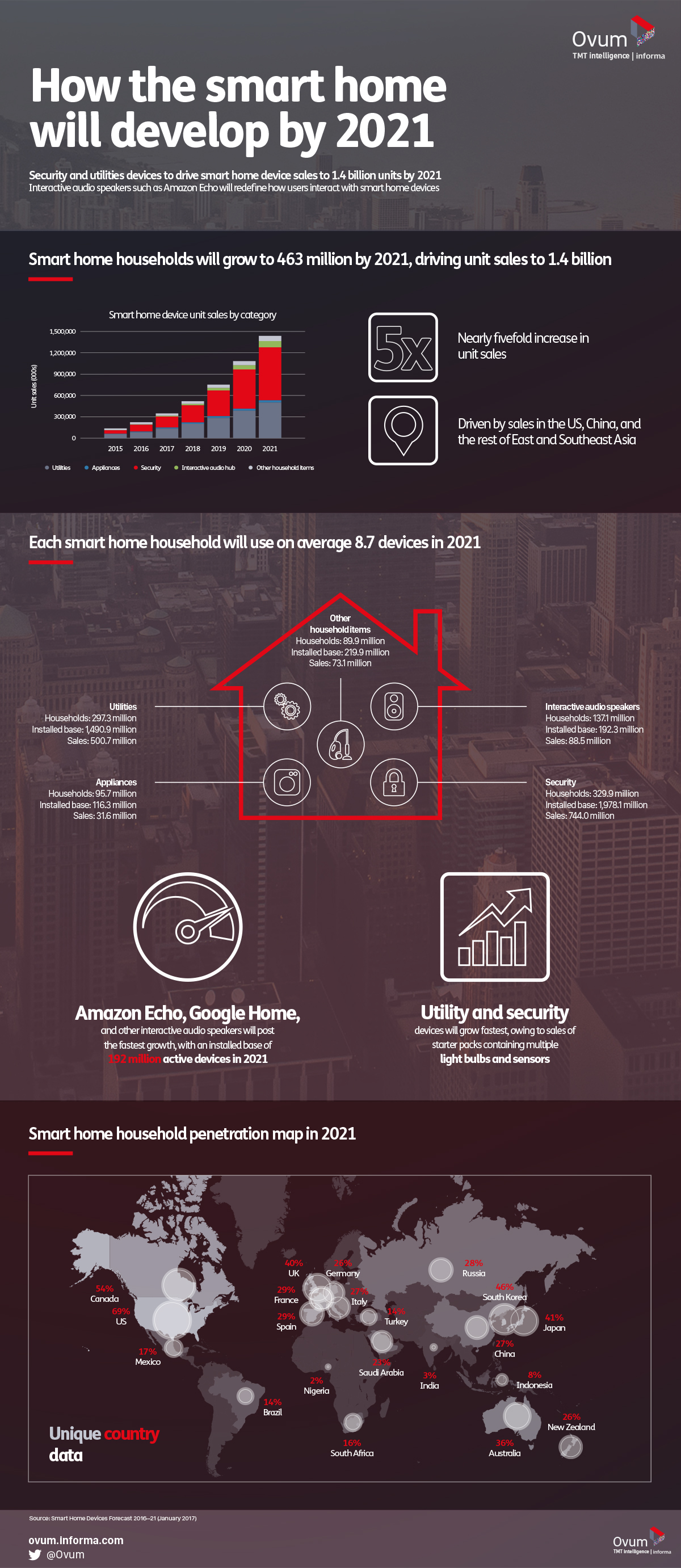Smart home households will grow fivefold to 463m worldwide in 2021 for a CAGR of 39%, says Ovum

Ovum‘s new Smart Home Devices Forecast: 2016–21 found that the largest smart home markets will be China and the US, thanks to high availability of devices and greater consumer interest in smart home services and products.
Device sales will, says Ovum, grow to more than 1.4 billion units by 2021, up from 224 million in 2016, driven particularly by sales of security devices, such as cameras, door locks, and sensors, and by utilities devices, such as connected light bulbs and smart thermostats. Ovum predicts that each smart home household will use on average 8.7 devices, bringing the total smart home active installed base to 4 billion devices.
“Another device category that will become increasingly important is interactive audio speakers, like Amazon Echo and Google Home,” said senior analyst Francesco Radicati, author of the Smart Home Devices Forecast. “By using voice control as a user interface, they allow consumers to control their smart home devices in a more natural way, without resorting to apps on their smartphones or tablets, while the AI capabilities of assistants like Amazon Alexa or Google Assistant help to deliver increasingly better services.”
As the newest device category, interactive audio speakers are set to post the fastest growth, with unit sales growing to more than 88 million in 2021, from 5.5 million in 2016 (a CAGR of 74%). Just as importantly, devices such as Echo or Google Home will help spur sales of other smart home devices, as consumers learn to link devices together to satisfy their families’ own particular needs.
However, because these speakers are not widely available outside the US, there are opportunities for local companies, for example in China or Japan, to launch their own alternatives. The first is Baidu‘s Little Fish device, which includes facial recognition and a camera screen along with voice control.
However, there is a distinct gap between the number of smart home households and the take-up of dedicated smart home services. For example, on a worldwide basis, 15.5% of households will have adopted smart home security technology by 2021, but only 6.2% will be paying for a professional smart home security service.
“This gap between the take-up of smart devices and services suggests that there is an opportunity to develop new business models around smart home technology,” said Michael Philpott, practice leader for Ovum’s Smart Home Services team. “However, players will need to be innovative and open to working with third-party devices and partners if they are to be successful.”
Comment on this article below or via Twitter @IoTGN



